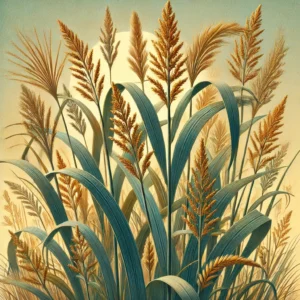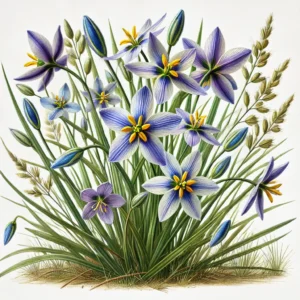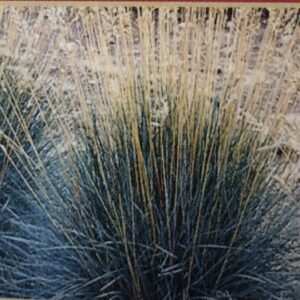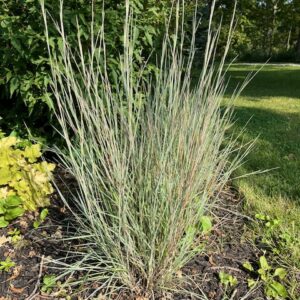Big bluestem (Andropogon gerardii) is a tall, perennial grass native to the North American prairies. Big bluestem is a cornerstone species of the North American prairie, playing a crucial role in the ecosystem and adding beauty to natural and landscaped environments.
Appearance:
Height: Typically 3 to 8 feet tall, though it can reach up to 10 feet in ideal conditions.
Leaves: Long, narrow, and arching, with a bluish-green color that can turn reddish or bronze in the fall. The leaves are up to 1/2 inch wide and have a smooth texture.
Seed Head: The seed head is distinctive, consisting of three main branches that spread outward and resemble a turkey’s foot or a comb. It is usually purple or reddish when in bloom and turns a tan color as it matures.
Roots: Big bluestem has a deep and extensive root system, which can extend down 5 to 10 feet, helping it to access moisture and stabilize the soil.
Habitat:
Range: Found throughout the central United States and Canada, particularly in the Great Plains and Midwest.
Soil: Prefers well-drained soils but is adaptable to various soil types, including sandy, loamy, and clayey soils.
Climate: Thrives in temperate climates with warm summers and cold winters. It is drought-tolerant due to its deep roots.
Ecological Role:
Wildlife: Provides habitat and food for numerous species, including insects, birds, and mammals. Its dense growth and seed heads are especially beneficial for birds.
Erosion Control: Its deep roots help stabilize soil and prevent erosion, making it valuable for conservation and land restoration projects.
Biodiversity: Plays a key role in maintaining the diversity of prairie ecosystems by contributing to soil health and supporting a range of plant and animal species.
Uses:
Ornamental: Used in landscaping for its dramatic height and attractive seed heads.
Restoration: Commonly planted in prairie restoration projects and conservation areas due to its ecological benefits.
Forage: Historically, it has been used as forage for livestock, though it is less common in modern agricultural systems.





